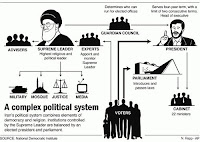Client-Statehood !

The Obama administration has endorsed a plan that would keep 3,000-4,000 American troops in Iraq past the December deadline to withdraw, although the full remaining presence there will be much larger. Just how large isn’t yet certain, but the numerous agencies and jobs planned for the future of Iraq could mean many thousands more armed men that will not be classified as “troops.”
After months of jostling the Iraqi government into allowing a large US military force to remain after the full withdrawal date specified under the 2008 Status of Forces Agreement, the Obama administration publicly voiced support for this plan without having received the permission of the Iraqi Prime Minister or Parliament. Some elements of the Obama administration and the Pentagon pushed for tens of thousands more troops to remain. The few thousand troops would reportedly be left to provide training and support to Iraqi Security Forces as well as “filling in gaps” in Iraqi defense capabilities. An additional force of private military contractors, numbering somewhere between 5,000-7,000, would also remain in order to provide security for an expanded diplomatic and contractor presence.
The reduced level of troops is possible in tandem with the expanded diplomatic mission because the US has been largely successful in its intentions in Iraq, setting in place the intended political, military, and economic elements for Iraq to become a long-term client state instead of a warfront. As the New York Times reported this week, the debate over specific numbers and figures is to some extent unimportant. “The administration has already drawn up plans for an extensive expansion of the American Embassy and its operations, bolstered by thousands of paramilitary security contractors.” Iraq may rival long-time client, Egypt. “An Office of Security Cooperation,” reported the Times, ”like similar ones in countries like Egypt, would be staffed by civilians and military personnel overseeing the training and equipping of Iraq’s security forces” for an indefinite period.
The State Department is expected to have up to 17,000 employees and contractors for this ongoing diplomatic presence, which has been described as necessary to provide “situational awareness around the country, manage political crises in potential hotspots such as Kirkuk, and provide a platform for delivering economic, development and security assistance.” Cutting through the bureaucratese, this means essentially to maintain Iraq’s client-state status.Providing housing, workspace, medical facilities, and security for a legion of civilian workers this large requires exorbitant funds, expansive land use, and construction not yet finalized in most areas.
According to the most recent Quarterly Report of the Special Inspector General for Iraq, the Department of State “will assume primary responsibility for a planned $6.8 billion operation” carried out “from 11 locations around Iraq, including three consulates and the world’s largest embassy.” Responsibilities also include carrying out “two of the largest Foreign Military Sales (FMS) and Foreign Military Financing (FMF) programs in the world and to spend the $2.55 billion in Iraq Security Forces Fund (ISFF).” As detailed in a declassified, partially redacted State Department document, a “fleet of 46 aircraft” will be “based and maintained in Baghdad, Basra, and Erbil” and will include 20 medium lift S-61 helicopters, 18 light lift UH-1N helicopters, three light observation MD-530 helicopters, and five Dash 8 fixed wing aircraft. Flight and landing zones, maintenance hangars, operation buildings, and air traffic control towers, along with maintenance and refueling will all be a part of the contracted construction operations.
Agreements will be negotiated with Iraq, Kuwait, and Jordan to secure authorization for continuous Embassy flight plans between the three countries, which all contain a massive presence of US military, diplomatic, and contractor personnel. The State Department’s $3.7 billion request for Iraq in FY 2012 includes funding for integrated programs of economic management as part of this so-called withdrawal plan. The United States Agency for International Development, alongside the United States Department of Agriculture, will continue to oversee sectors of Iraq’s economy, especially its natural resources, as agreed upon in the secretive Strategic Framework Agreement.
Signs are that the Iraqi government will conform to US wishes on the size, scope, and nature of the continuing American presence in Iraq. Given the political, military, and economic infrastructure set to be implemented by Washington post-2011, it is also likely that Iraq may soon become another prosaic Middle Eastern state under the US domain of influence.(With thanks to John Glaser)



Comments